|
Putting it all together... Upgrading Electronics |


PreDumpCoach
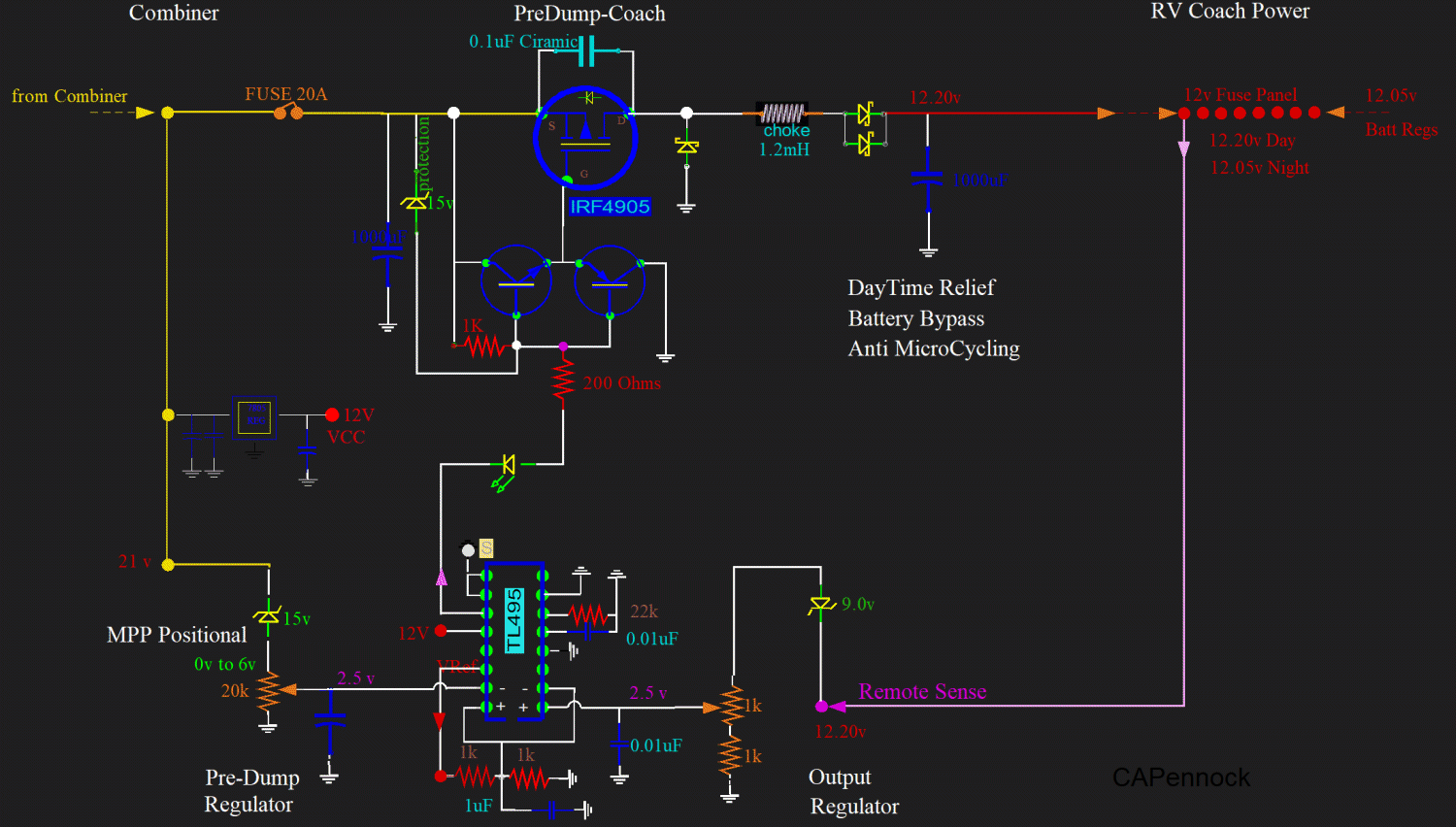 Here is a PreDump set to keep a Power Point of about 17 volts, and a regulated output of 12.2 volts.
Here is a PreDump set to keep a Power Point of about 17 volts, and a regulated output of 12.2 volts.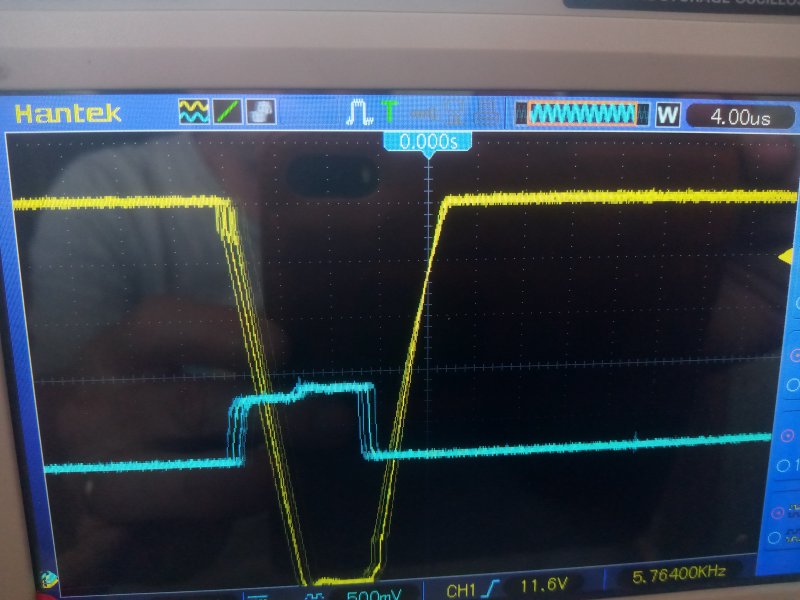 This device is producing too much heat.
But before I show why, I take a look at the intire view...
This device is producing too much heat.
But before I show why, I take a look at the intire view...
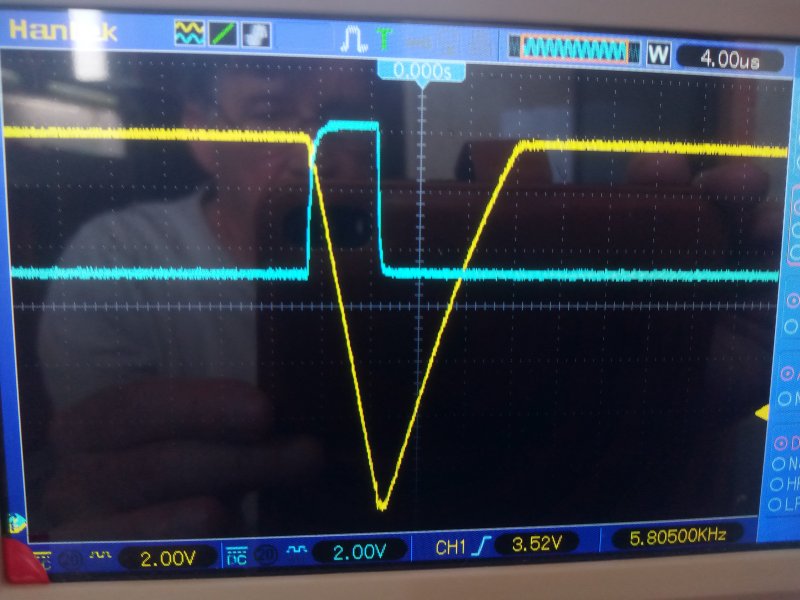 Here is the worst situation, a heavy load. It is about 10 amps.
Here is the worst situation, a heavy load. It is about 10 amps. 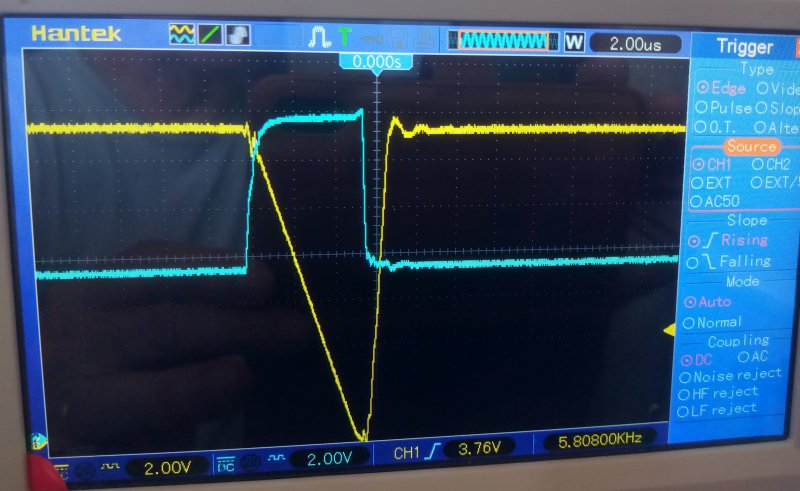
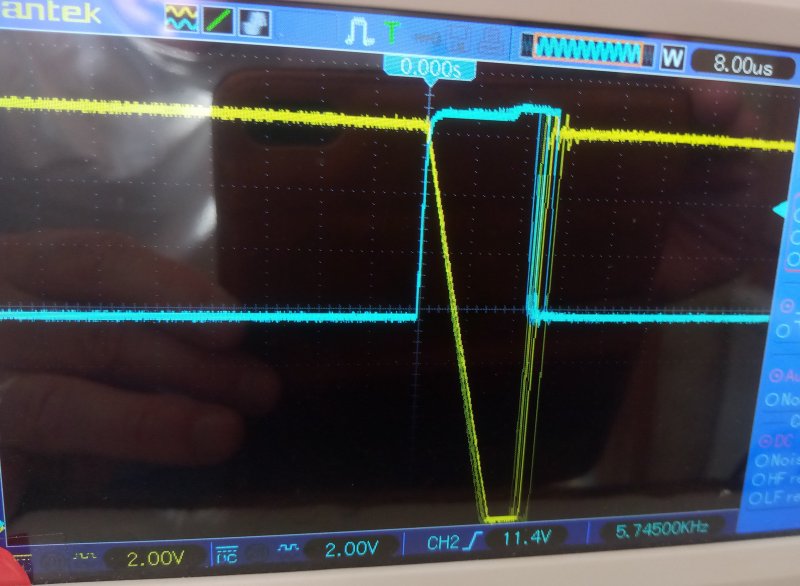 Multiple triggers are displaying multiple traces that is causing the jitter in the display.
Multiple triggers are displaying multiple traces that is causing the jitter in the display.  My first designs used a simple resistive voltage divider, yielding 5volts for a representation of 20 volts.
I like to use one-byte precision inside the microprocessor, which is 255 integer values.
One byte is faster than two bytes.
And this was OK in the days of Lead Acid. I could just barely read the difference between 12.6 and 12.7, one decimal place.
That was OK. I established Float points, Bulk points, Gassing points, and equalizing, good enough.
My first designs used a simple resistive voltage divider, yielding 5volts for a representation of 20 volts.
I like to use one-byte precision inside the microprocessor, which is 255 integer values.
One byte is faster than two bytes.
And this was OK in the days of Lead Acid. I could just barely read the difference between 12.6 and 12.7, one decimal place.
That was OK. I established Float points, Bulk points, Gassing points, and equalizing, good enough.
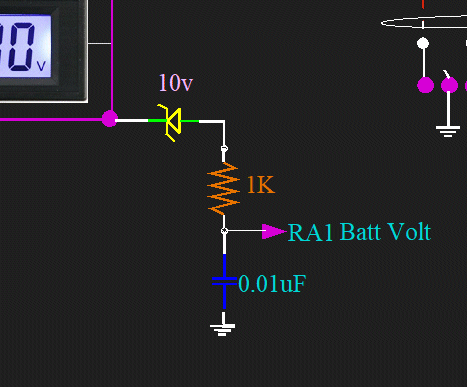 I did not like the 9 volt zener. A 10 volt would be way better, and there is a reason:
I did not like the 9 volt zener. A 10 volt would be way better, and there is a reason: 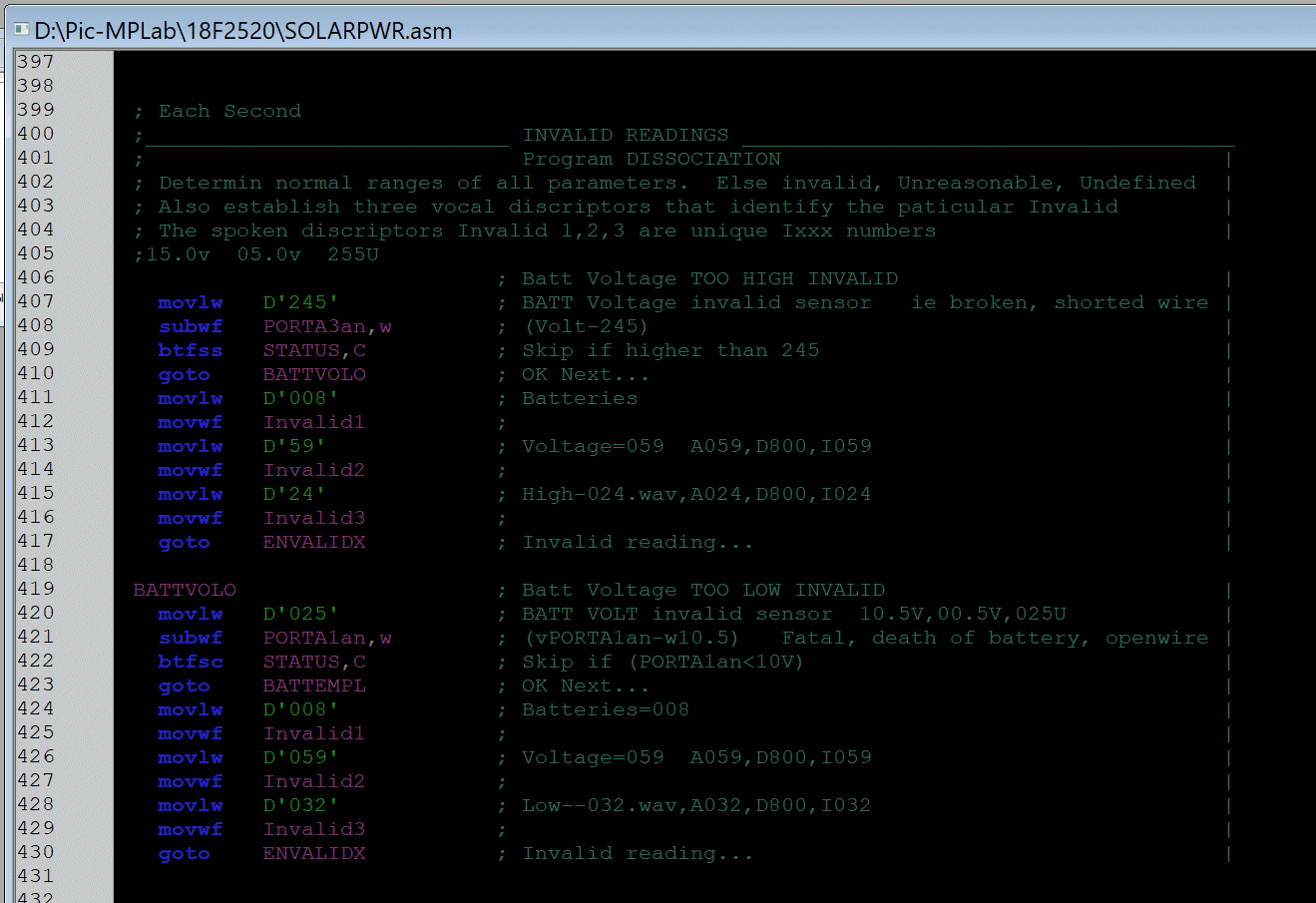 Beside changing the physical and the electrical part of the boards, I had to change all areas in the code where Battery voltages were referenced.
A quick and simple editing of just the values. The code basically remains the same.
Beside changing the physical and the electrical part of the boards, I had to change all areas in the code where Battery voltages were referenced.
A quick and simple editing of just the values. The code basically remains the same.
 SolarCharge Controler Box#1
SolarCharge Controler Box#1 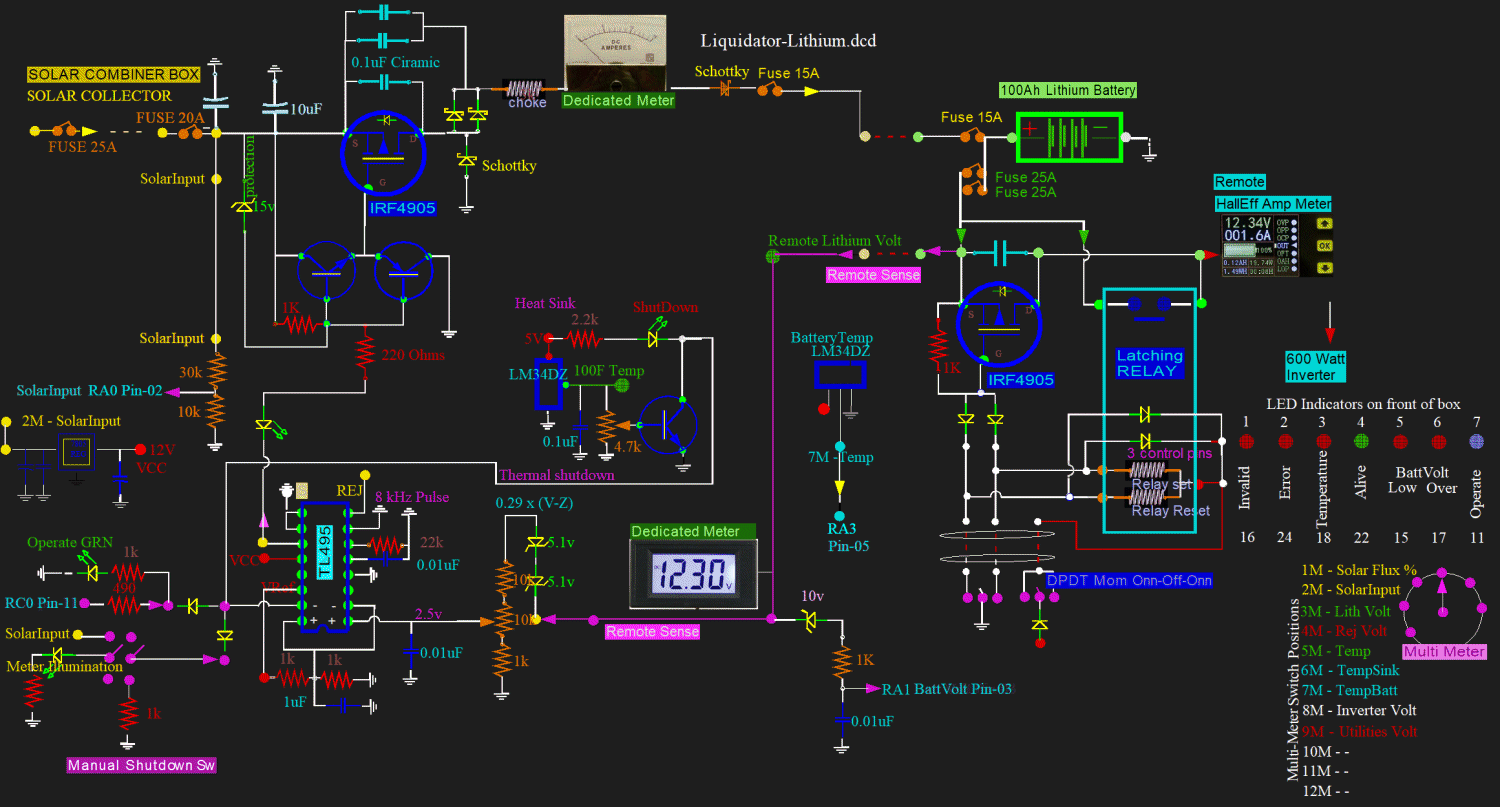 A couple of years ago, I added two caps and two schottky diodes to the circuit.
These are at the output of the MOSFET. I have never seen this done before,
and in fact, did not remember doing it myself.
I will now recheck my work and evaluate.
A couple of years ago, I added two caps and two schottky diodes to the circuit.
These are at the output of the MOSFET. I have never seen this done before,
and in fact, did not remember doing it myself.
I will now recheck my work and evaluate.
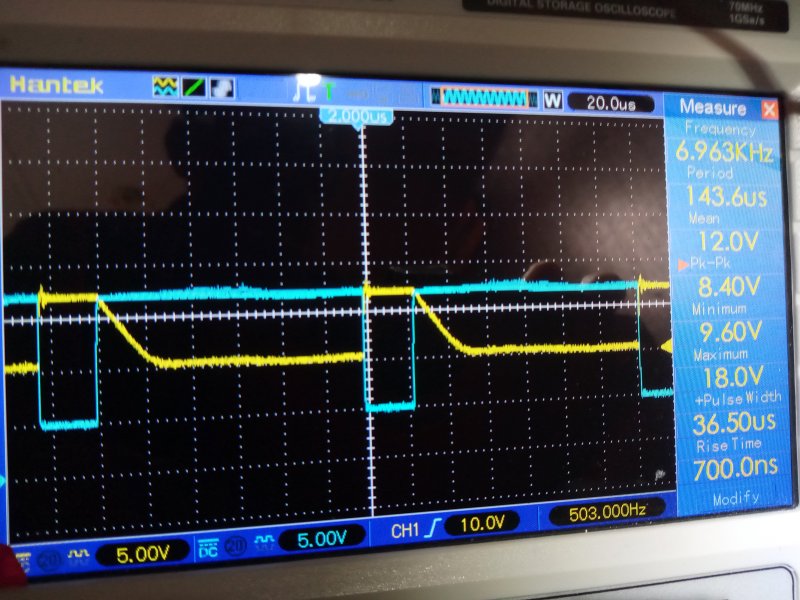 This is at the output of the MOSFET and before the diodes.
This is what the MOSFET sees. Clean display, does not even know there is a choke.
This is at the output of the MOSFET and before the diodes.
This is what the MOSFET sees. Clean display, does not even know there is a choke.
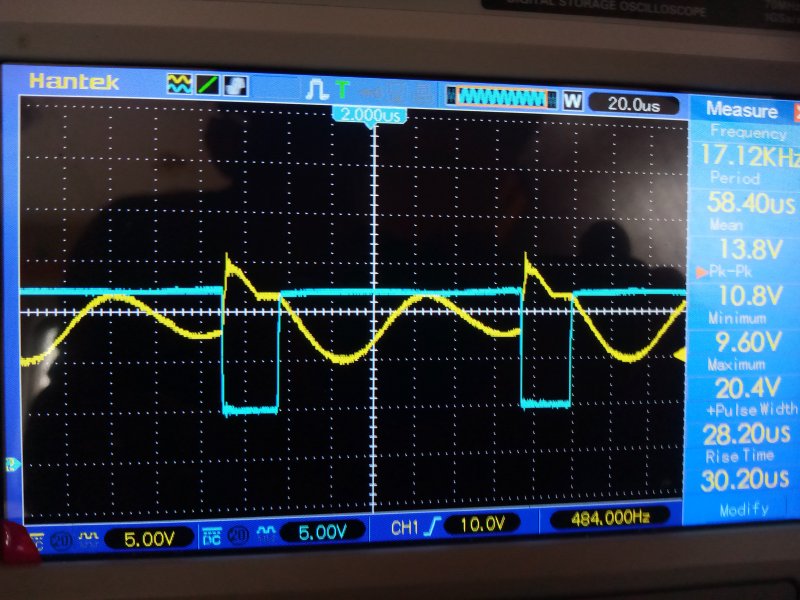 It is a different story after the dual diodes. Here is at the input to the choke.
A lot is happening.
The choke and capacitors self resonate at about 10kHz. The cyan drive is 7kHz.
It is a different story after the dual diodes. Here is at the input to the choke.
A lot is happening.
The choke and capacitors self resonate at about 10kHz. The cyan drive is 7kHz.
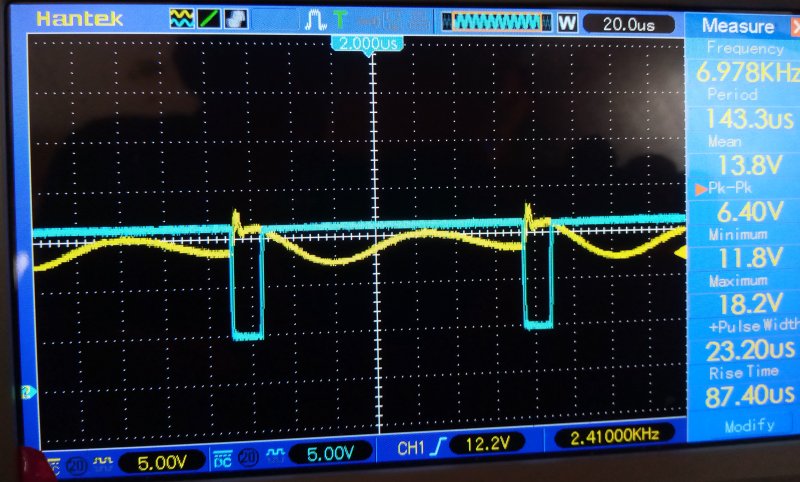 Here the double schottkys are shorted out. And here, it looks like the pulse width is shorter. But it is not true.
The pulse width is changing all the time. In addition, the battery is becoming more charged, and the pulse width is actually decreasing in this picture.
Here the double schottkys are shorted out. And here, it looks like the pulse width is shorter. But it is not true.
The pulse width is changing all the time. In addition, the battery is becoming more charged, and the pulse width is actually decreasing in this picture.
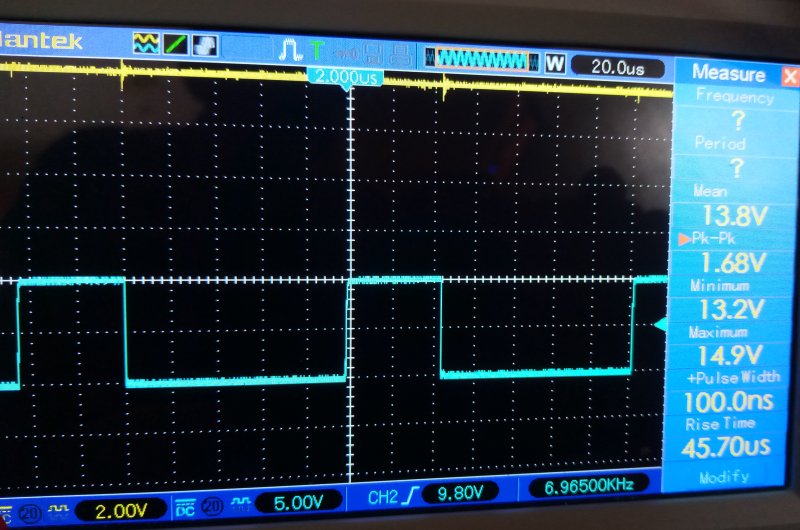 Here is the output after the choke. This is the final output to the battery.
There is very little ripple, if any, as seen by the battery. There is little anticycling wear on the battery.
There is a little noise on the output at the edge of the power stroke. It goes away if I connect the scopes ground lead.
Here is the output after the choke. This is the final output to the battery.
There is very little ripple, if any, as seen by the battery. There is little anticycling wear on the battery.
There is a little noise on the output at the edge of the power stroke. It goes away if I connect the scopes ground lead.
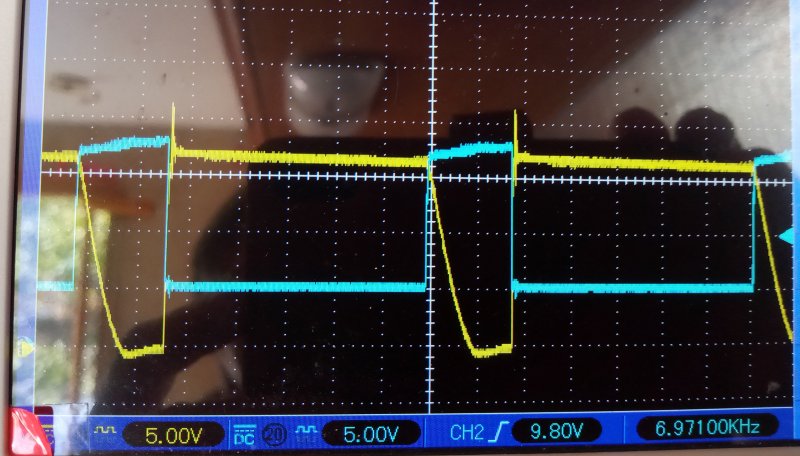 There is a reason why the MOSFET output has not been going down to zero volts:
The output impedance was too high, and the output was lightly loaded.
Here is a picture with the opposite - heavy loading. Regulator set to 13.6v, and pushing a lot of current into the battery.
The output goes to zero.
There is a reason why the MOSFET output has not been going down to zero volts:
The output impedance was too high, and the output was lightly loaded.
Here is a picture with the opposite - heavy loading. Regulator set to 13.6v, and pushing a lot of current into the battery.
The output goes to zero.
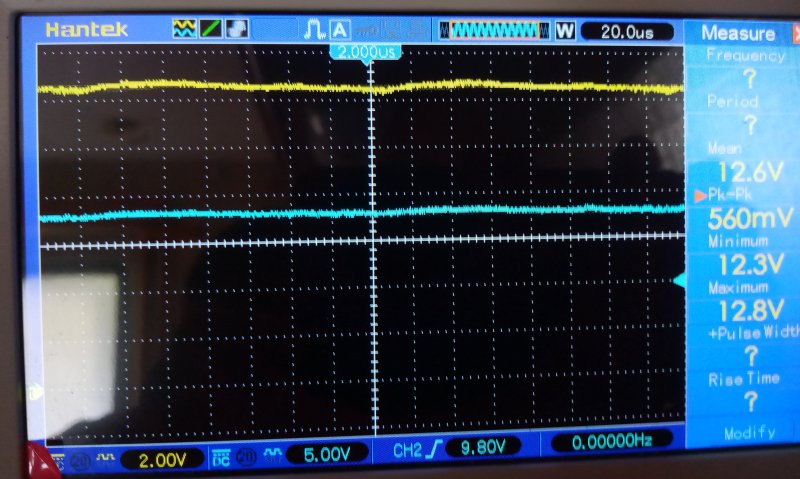 Evidently, there is leakage in the MOSFET and blocking diodes.
To prove this, I adjusted the regulator output to 13.46v, when it had been 13.51.
The regulator is now in a total shut off state due to the battery voltage of 13.50v being higher than regulator.
But the MOSFET output remained at a static 12.3 volts. A flat horizontal line, and way up off the floor at 12.3 volts.
Logically, it should be zero.
But practically, it is not zero due to leakage. I took a 100 ohm resistor and shorted out the output.
The output voltage immediately went to zero. Next, I shorted the output with a 1k ohm resistor. Same result, the output went to zero.
But I am not going to keep this up. I have no idea what the leakage impedance is, maybe 10k or 20k. I do not want to waste my time. It is just there, and everything is working as expected.
Evidently, there is leakage in the MOSFET and blocking diodes.
To prove this, I adjusted the regulator output to 13.46v, when it had been 13.51.
The regulator is now in a total shut off state due to the battery voltage of 13.50v being higher than regulator.
But the MOSFET output remained at a static 12.3 volts. A flat horizontal line, and way up off the floor at 12.3 volts.
Logically, it should be zero.
But practically, it is not zero due to leakage. I took a 100 ohm resistor and shorted out the output.
The output voltage immediately went to zero. Next, I shorted the output with a 1k ohm resistor. Same result, the output went to zero.
But I am not going to keep this up. I have no idea what the leakage impedance is, maybe 10k or 20k. I do not want to waste my time. It is just there, and everything is working as expected.
 SolarCharge Controller #2.
SolarCharge Controller #2.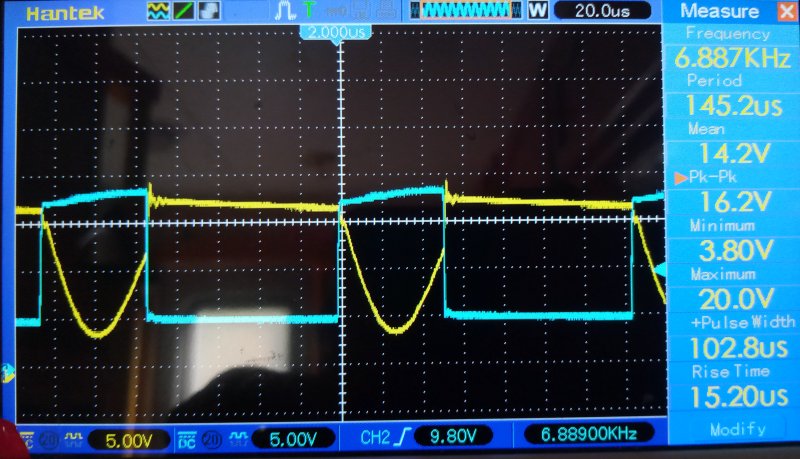 Same schematic as the lithiums.
Same schematic as the lithiums. 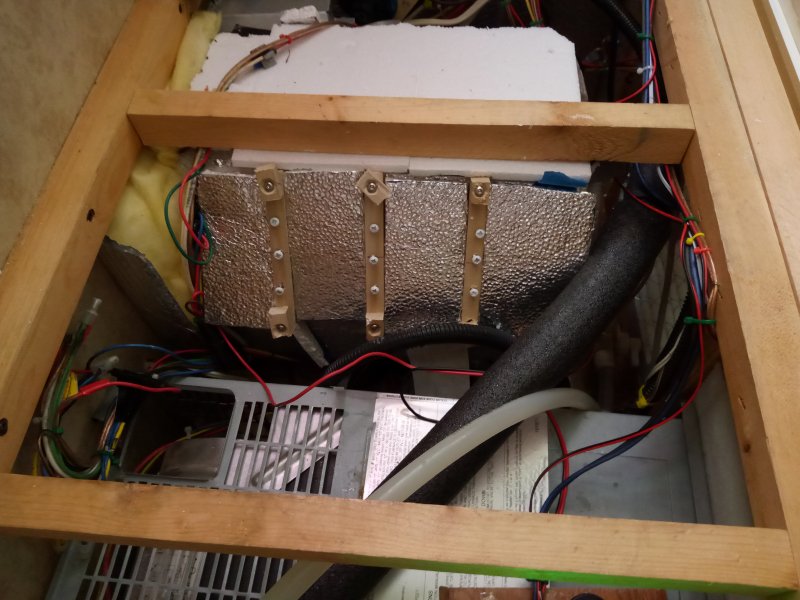 The Pre-Dump for the Hot Water Heater.
The Pre-Dump for the Hot Water Heater.
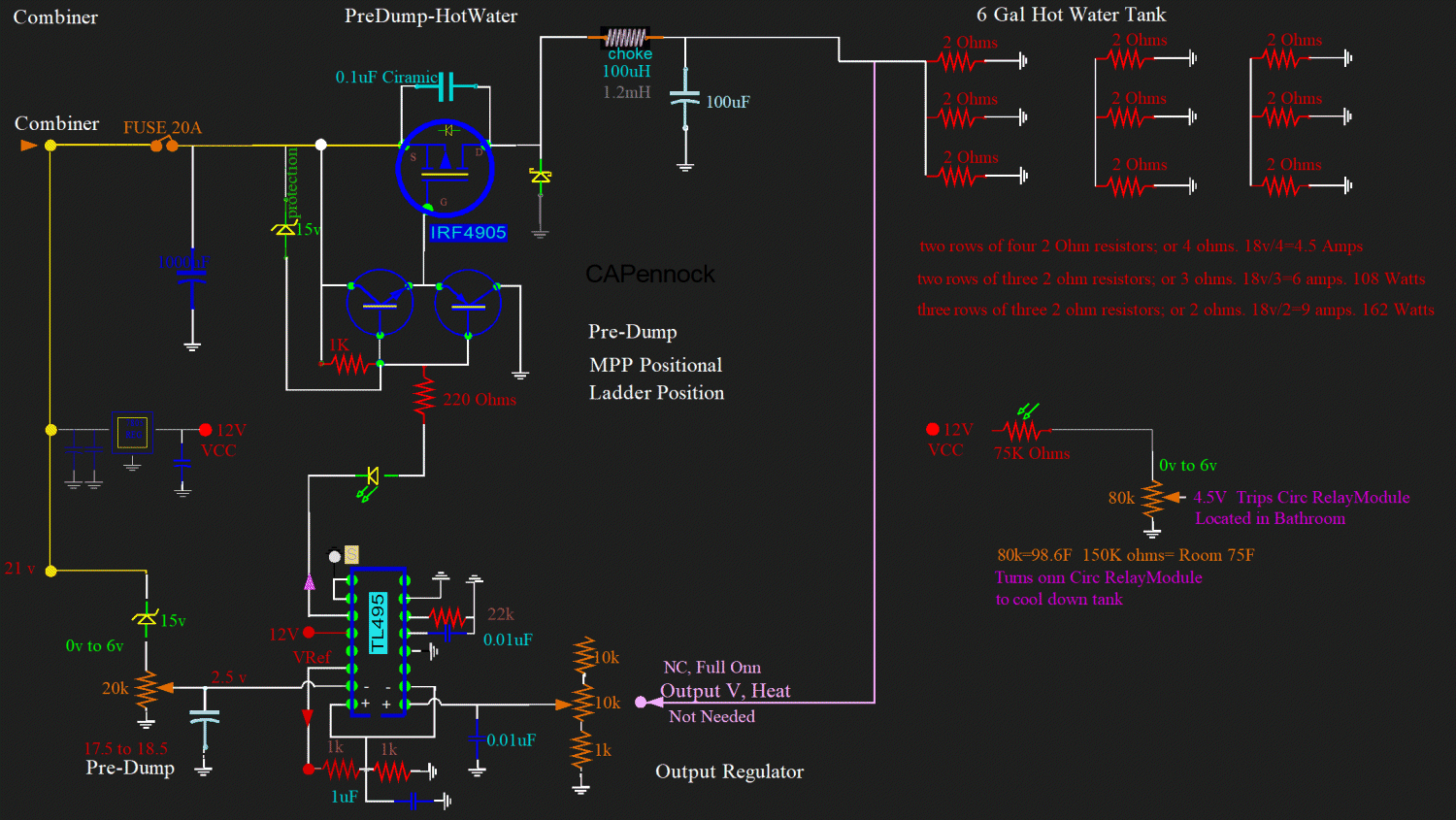 The Pre-Dump for the Hot Water Heater.
The Pre-Dump for the Hot Water Heater.
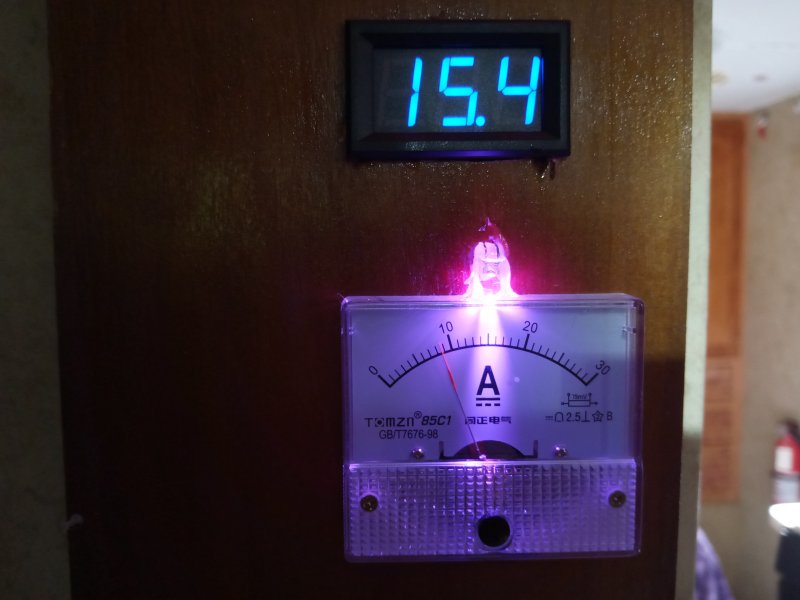 The Pre-Dump for the Hot Water Heater.
The Pre-Dump for the Hot Water Heater.
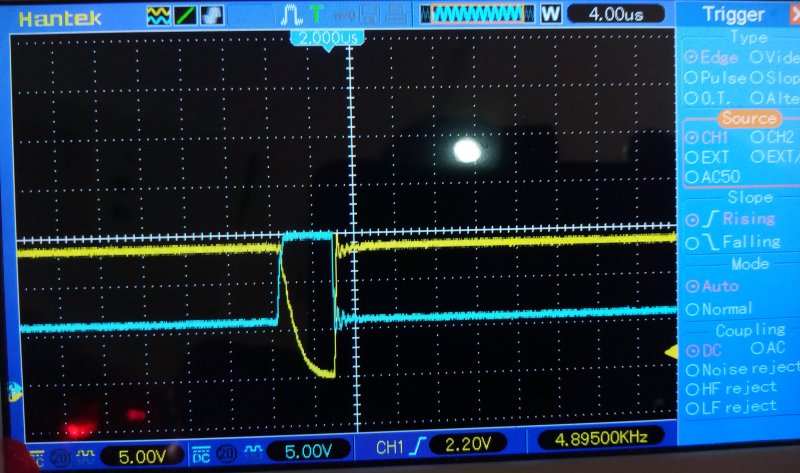 I had to increase the input electrolytic value, but otherwise, the electronics is looking good.
I had to increase the input electrolytic value, but otherwise, the electronics is looking good.
Regulator Van
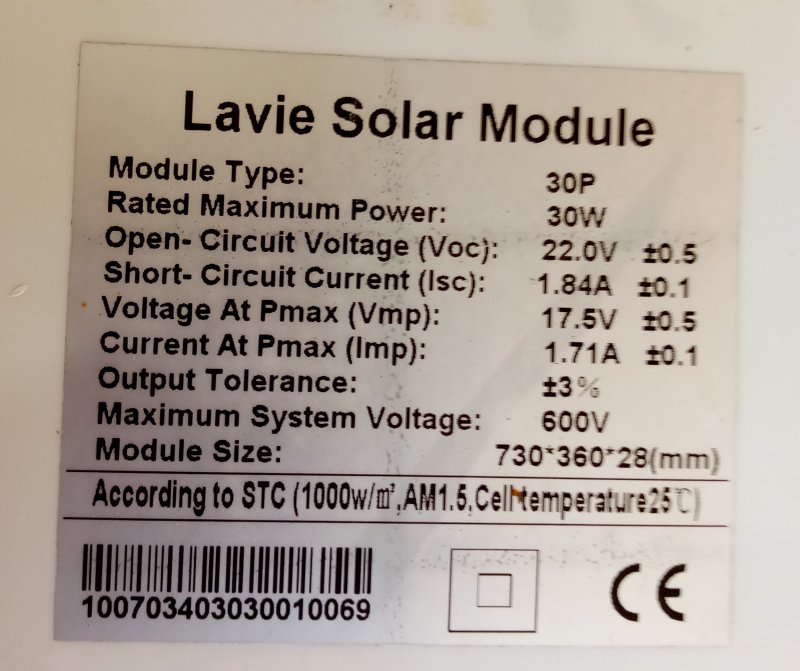 I am moving this 30Watt panel from the Travel Trailer to the Van.
I am moving this 30Watt panel from the Travel Trailer to the Van.
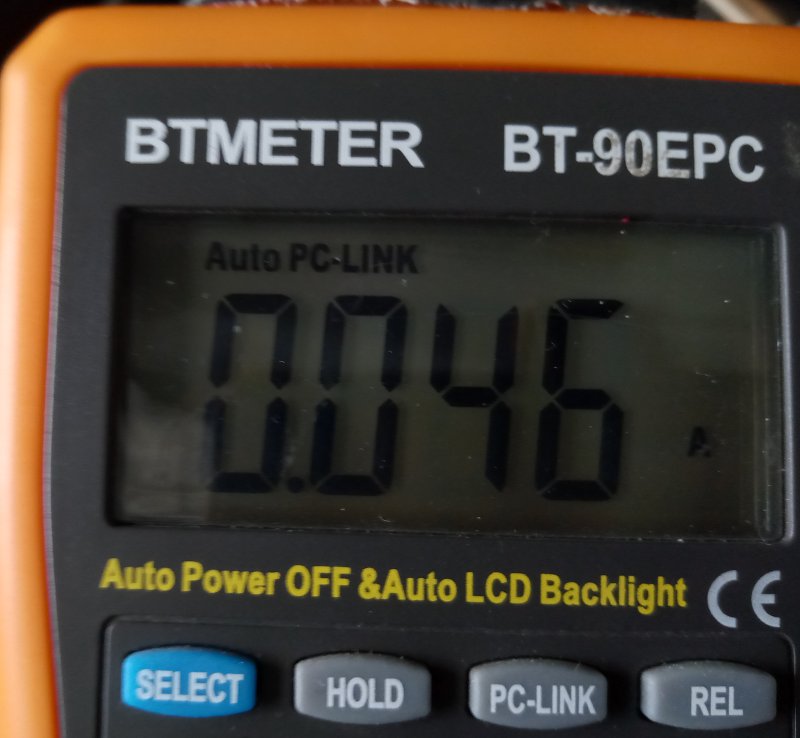 And here is the Parasitic draw of the Van: 0.046 amps
The Parasitic draw is mostly the Security System, and initially starts out at 0.2 Amps, and after 30 seconds or so, decays to 0.046 amps.
And here is the Parasitic draw of the Van: 0.046 amps
The Parasitic draw is mostly the Security System, and initially starts out at 0.2 Amps, and after 30 seconds or so, decays to 0.046 amps.
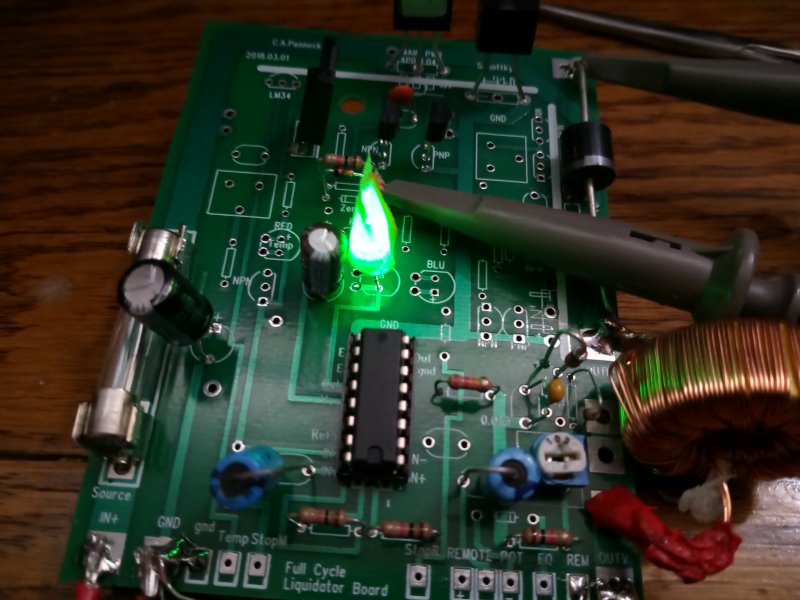 Here is the Solar Regulator for the Van.
Here is the Solar Regulator for the Van.  Here is a preliminary waveform before the Solar voltage was increased from 12 volts to 13.5 volts.
Here is a preliminary waveform before the Solar voltage was increased from 12 volts to 13.5 volts.
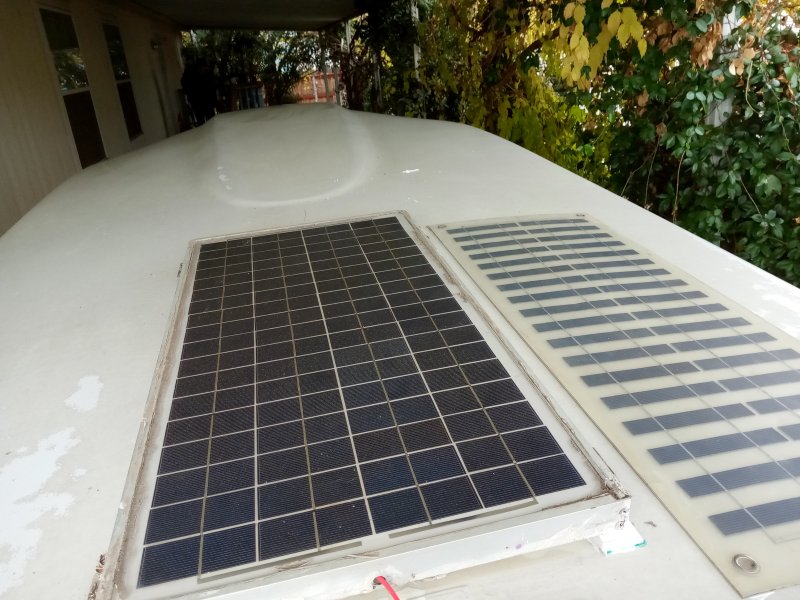 I moved the Flex Panel over to the side. It was heavily damaged by hail.
I moved the Flex Panel over to the side. It was heavily damaged by hail.